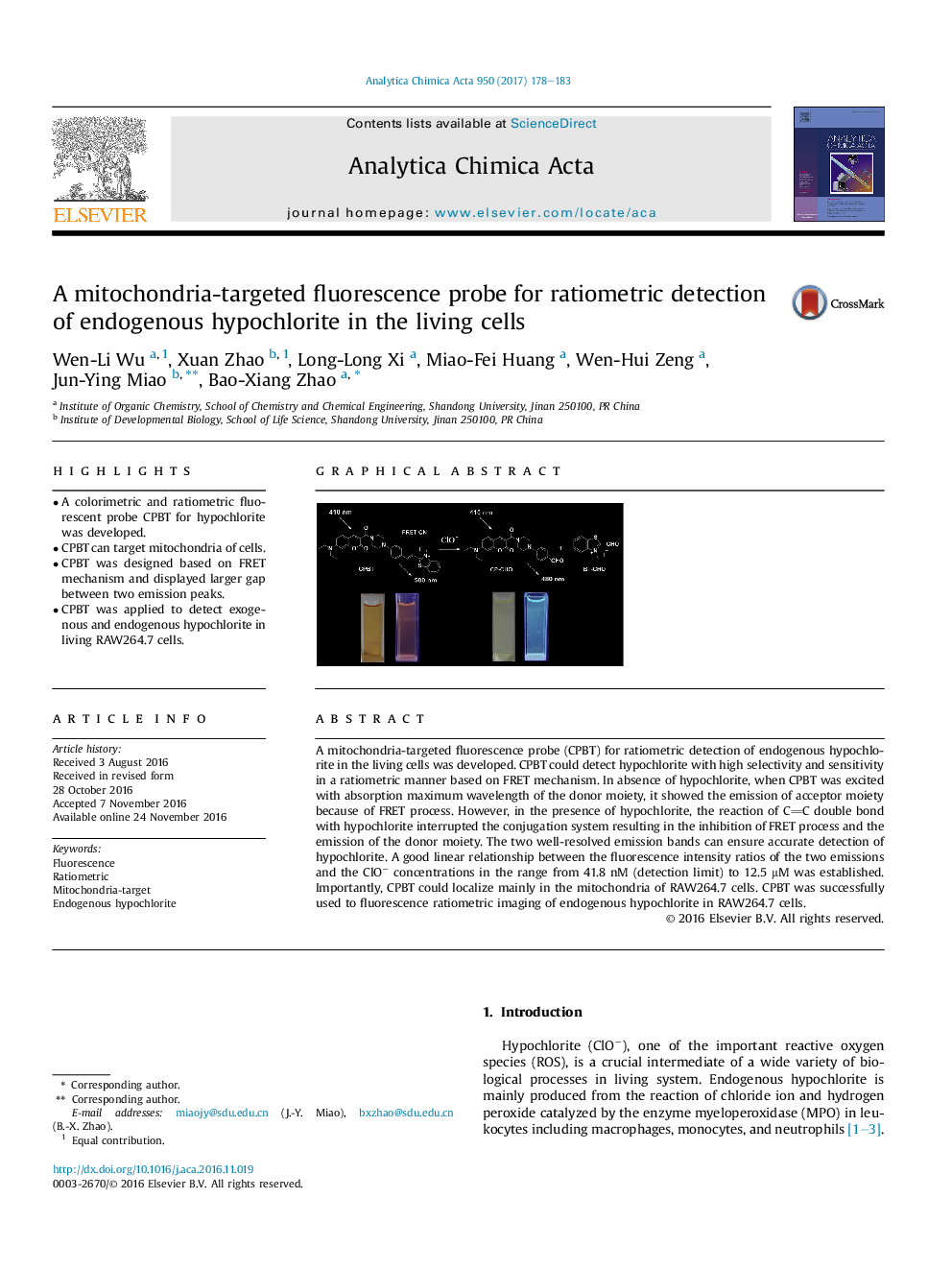| کد مقاله | کد نشریه | سال انتشار | مقاله انگلیسی | نسخه تمام متن |
|---|---|---|---|---|
| 5131080 | 1490882 | 2017 | 6 صفحه PDF | دانلود رایگان |

- A colorimetric and ratiometric fluorescent probe CPBT for hypochlorite was developed.
- CPBT can target mitochondria of cells.
- CPBT was designed based on FRET mechanism and displayed larger gap between two emission peaks.
- CPBT was applied to detect exogenous and endogenous hypochlorite in living RAW264.7Â cells.
A mitochondria-targeted fluorescence probe (CPBT) for ratiometric detection of endogenous hypochlorite in the living cells was developed. CPBT could detect hypochlorite with high selectivity and sensitivity in a ratiometric manner based on FRET mechanism. In absence of hypochlorite, when CPBT was excited with absorption maximum wavelength of the donor moiety, it showed the emission of acceptor moiety because of FRET process. However, in the presence of hypochlorite, the reaction of CC double bond with hypochlorite interrupted the conjugation system resulting in the inhibition of FRET process and the emission of the donor moiety. The two well-resolved emission bands can ensure accurate detection of hypochlorite. A good linear relationship between the fluorescence intensity ratios of the two emissions and the ClOâ concentrations in the range from 41.8 nM (detection limit) to 12.5 μM was established. Importantly, CPBT could localize mainly in the mitochondria of RAW264.7 cells. CPBT was successfully used to fluorescence ratiometric imaging of endogenous hypochlorite in RAW264.7 cells.
140
Journal: Analytica Chimica Acta - Volume 950, 15 January 2017, Pages 178-183